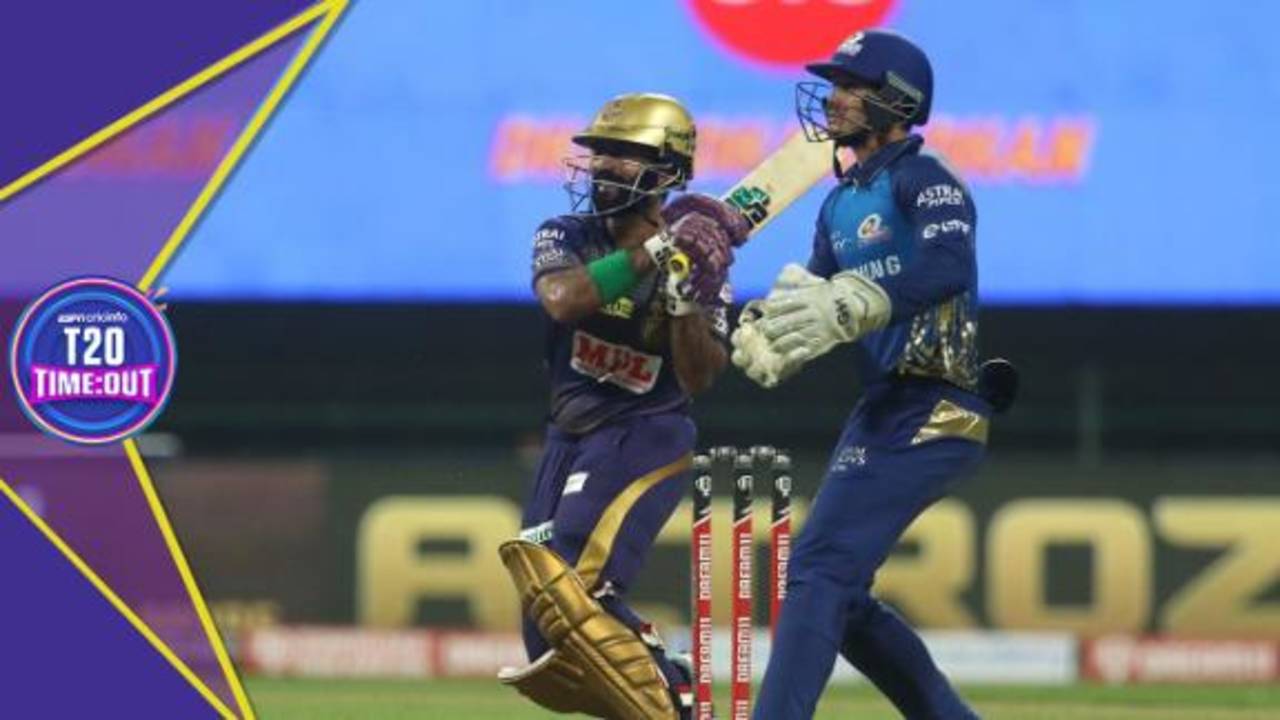How Rohit Sharma powered Mumbai Indians to a Wankhede total in Abu Dhabi
Despite the square boundaries being the longest, Sharma struck 49 off 20 balls that were short or back of a length
Saurabh Somani
24-Sep-2020
Rohit Sharma's overall record in the IPL is substantial, but over the past three years, his numbers had dipped somewhat. That the Mumbai Indians still won twice in those three years speaks to the strength of the franchise, but they did it with a somewhat lesser contribution from their captain than they have usually been accustomed to.
From 2017 to 2019, Sharma averaged 25.60 and struck his runs at 127.52, both well below what his numbers had been from 2008 to 2016: an average of 33.68 and a strike rate of 131.72. The difference is more stark when you look at his impact per innings according to ESPNcricinfo's Smart Stats algorithm - among the 12 years he's played in the IPL, his two lowest years were 2017 and 2018, while 2019 ranks eighth.
Perhaps not entirely coincidentally, the years 2017 to 2019 also saw an upswing in the overall scoring rate in the IPL, with run rates for the tournament being 8.41, 8.64 and 8.41 in each successive year - having never gone past the 8.40 mark in any previous IPL year.
That's not to say the pace of the T20 game was becoming more rapid than Sharma could handle. He can - and has been - as devastating in the shortest format as he is in one-day cricket. But in his latest avatar, Sharma has worked out a method which generally sees him be more circumspect at the start before exploding later on. It works a treat when he stays for any length of time, but if he's out early, his numbers suffer. And the nature of T20 cricket is that you will be out early more often than you go deep.

Rohit Sharma goes for the big one•BCCI
As among the smartest thinkers of the game, Sharma will have worked out the method that suits his team best, even if that means a dip in his personal numbers, and there are sound reasons for his approach. Given the Mumbai Indians' depth and hitting power, even a below-par Sharma score can be absorbed. And when he's at his best, he can add a layer of firepower that takes the team to another level. On balance, that is a trade-off that benefits the team, and the results are inarguable too.
And now, with the IPL moving to the UAE, it might just be a reversion to the mean that sees Sharma's method be even more effective. The first evidence of that was in how Sharma packed a punch in his 80 off 54 balls against the Kolkata Knight Riders, leading his side to a formidable 195 for 5 and, eventually, a comprehensive win.
The Mumbai Indians play eight of their league matches in Abu Dhabi, with three each in Dubai and Sharjah. The Sheikh Zayed Stadium in Abu Dhabi has not been as conducive to big-hitting as the Wankhede has been. Before the Mumbai Indians played the Knight Riders, a six was hit every 49 balls at the venue, as opposed to every 17 balls at the Wankhede. The ground itself is bigger, and the pitches have tended not to be as flat. In T20s since 2017, the run rate at Abu Dhabi has been 7.3, lower than any IPL venue in that timeframe.
A lower par score means that if Sharma does fall early, it will cause even less of a dent to the side than it normally does. But the fun comes when he goes big, because then, ground size becomes irrelevant, and he can power his team to a Wankhede total in Abu Dhabi.
